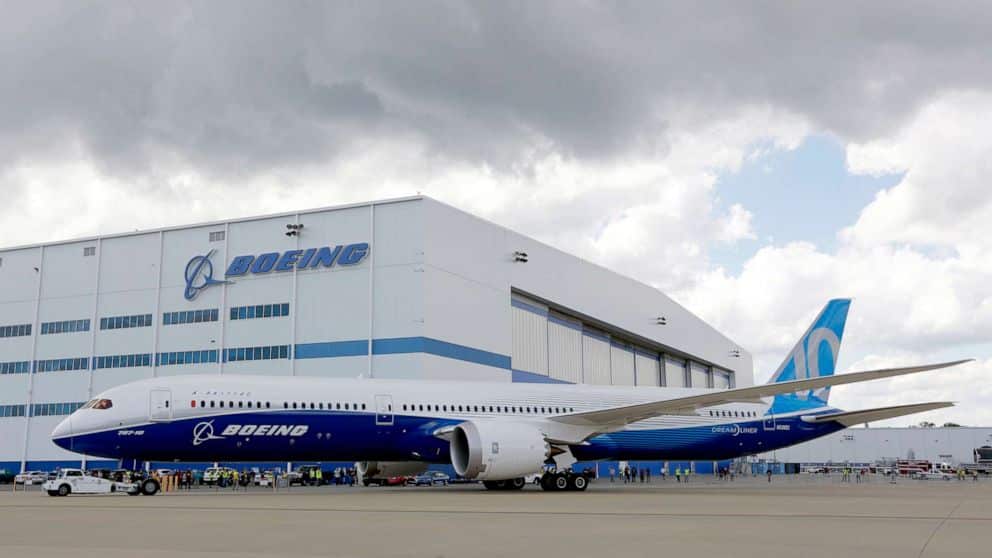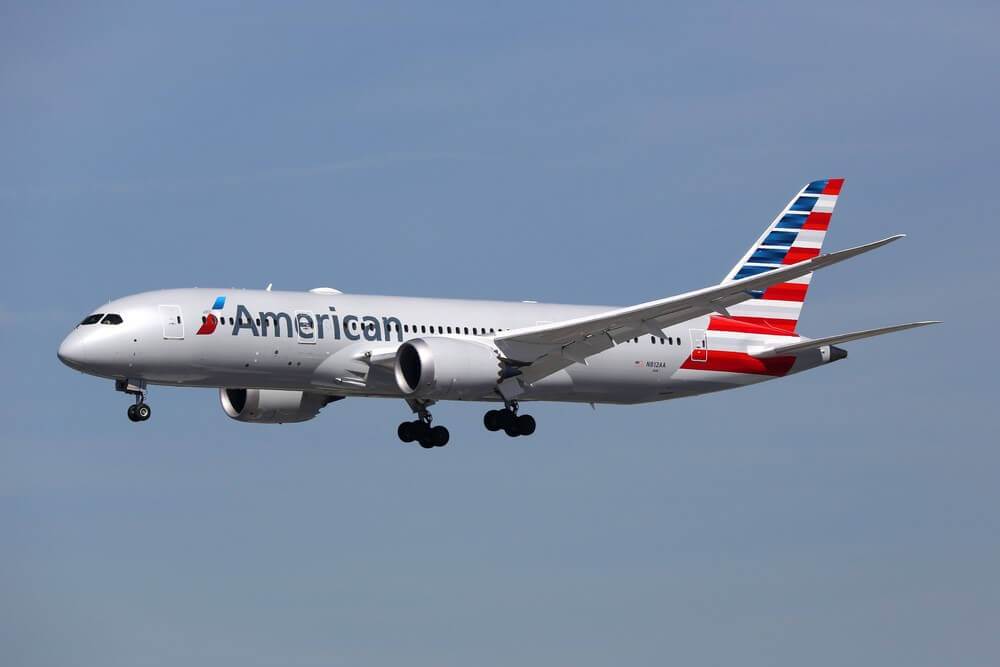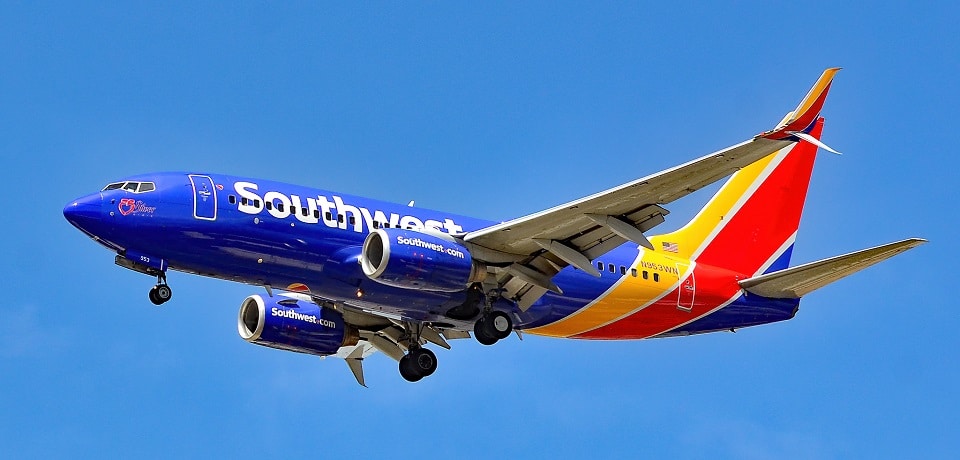Aviation
Boeing Forecasts Demand for More than 41,000 New Airplanes by 2041
Boeing predicts roughly 41,000 aircraft by 2041, when the aviation industry recovers from the COVID era. These are a mixed fleet, with narrow body and freighter aircraft in strong demand. #boeing #FARNBOROUGH #2041

With demand rebounding for international air travel following ongoing recovery in many domestic markets, Boeing [NYSE: BA] today projected demand for more than 41,000 new airplanes through 2041, underscoring aviation industry resilience two years after the pandemic began. Boeing released its 2022 Commercial Market Outlook (CMO), the company’s annual long-term forecast, in advance of the Farnborough International Airshow.
The CMO forecasts a market value of $7.2 trillion for new airplane deliveries, with the global fleet increasing by 80% through 2041 compared to 2019 pre-pandemic levels. Approximately half of passenger jet deliveries will replace today’s models, improving the global fleet’s fuel efficiency and sustainability. In addition, Boeing Global Services forecasts $3.6 trillion in demand in its market segments over the same time period, including strong demand for maintenance and modifications such as converted freighters; digital solutions that increase efficiency and reduce cost; and effective training to enable the supply of pilots and technicians.
“Despite the unprecedented disruption over the past two years, the aviation industry has shown incredible resilience adapting to the challenge,” said Ihssane Mounir, Boeing’s senior vice president of Commercial Sales and Marketing. “The 2022 CMO draws upon our expertise forecasting market trends to demonstrate the strong demand for new airplanes and related services in the coming decades, providing a waypoint as the industry continues to navigate its recovery.”
The 2022 CMO includes these regional projections in the next 20 years:
- Continuing their strong growth story, Asian markets account for roughly 40% of long-term global demand for new airplanes. Europe and North America each account for just over 20% of demand, with 15% of deliveries going to other regions.
- South Asia’s fleet continues to lead global growth, at 6.2% annually. Led by India, the region’s fleet will nearly quadruple from 700 airplanes in 2019 to more than 2,600 airplanes through 2041. Southeast Asia is projected to see the second-fastest growth with a near-tripling of its commercial fleet to 4,500 airplanes.
- This year’s CMO does not include a forecast for airplane deliveries to Russia due to sanctions against aircraft exports. This change reduces global 20-year demand by about 1,500 airplanes compared to last year’s CMO.
Single-aisle airplanes will account for 75% of all new deliveries, unchanged from last year’s CMO, and totaling nearly 31,000 airplanes. Through 2041, new widebody airplanes will account for about 18% of deliveries with more than 7,200 airplanes, enabling airlines to serve new and existing markets, passenger and cargo, more efficiently than in the past.
The CMO also predicts continued robust demand for dedicated freighters to support global supply chains and growing express networks. Carriers will need 2,800 additional freighters overall, including 940 new widebody models in addition to converted narrow-body and widebody freighters over the forecast period.
|
NEW DELIVERIES (2022-2041) |
|
|
Regional Jet |
2,120 |
|
Single Aisle |
30,880 |
|
Widebody |
7,230 |
|
Freighter |
940 |
|
Total |
41,170 |
Boeing has provided the CMO annually for more than 60 years. As the longest-running jet forecast, the CMO is regarded as the most comprehensive analysis of the commercial aviation industry. Learn more about the Commercial Market Outlook. In addition, Boeing will release its Pilot and Technician Outlook on July 25.

Aviation
All passengers killed in plane crash, after pilot let his children to control the plane

When boarding a plane, passengers entrust their safety to the skilled hands of the pilot. However, tragedy struck when one of the flight ended in disaster as all passengers lost their lives in a horrific plane crash.
In 1994, during a flight from Moscow to Hong Kong, tragedy struck as an Aeroflot relief pilot made a fateful decision. In a move that would have devastating consequences, the pilot invited his own children into the cockpit to play with the controls. Little did anyone know, this seemingly innocent gesture would lead to the loss of all 75 lives aboard the aircraft.
It was a seemingly innocent act that led to catastrophic results. The relief pilot, Mr. Kudrinsky, invited his two children, Yana, 12, and Eldar, 15, into the cockpit during the late hours of the night. Little did anyone know, this simple gesture would set off a chain of events that would end in tragedy.
Once in the cockpit, the children were allowed to sit in the captain’s chair and play with the controls, unaware that they should have been disabled as the plane was in autopilot mode.
Eldar, perhaps in a moment of curiosity or innocence, held the control column down for a mere 30 seconds. Yet, in those brief moments, the autopilot disengaged, thrusting the aircraft into manual control.
By the time the pilots regained their seats and attempted to regain control, it was too late. Despite their efforts to pull the plane out of a dive, they overcorrected, causing the flight to climb almost vertically, ultimately stalling it.
Final moment Flight 593 crash
In the final moments, as the pilots struggled to stabilize the aircraft, Flight 593 crashed into the Kuznetsk Alatau Mountain range in southern Russia, completely obliterating the plane and claiming the lives of everyone on board.
Investigations revealed a chilling truth: there was no evidence of technical failure. Instead, the crash was attributed to the unthinkable decision to allow inexperienced hands to manipulate the controls of a commercial aircraft.
The black box recording captured the harrowing sequence of events, providing a grim reminder of the human cost of a lapse in judgment. In just over two minutes, the lives of all on board were tragically short, leaving behind a legacy of sorrow and unanswered questions.
Aviation
American Airlines Flight Attendant Orders First-Class Traveler to use Economy Restroom

On a recent American Airlines flight from Chicago O’Hare to Phoenix, Pamela Hill-Veal, a retired circuit court judge, found herself at the center of a disturbing incident.
Despite traveling in First Class, she was directed by a flight attendant to use the Economy Class restroom, sparking allegations of racial discrimination. According to Hill-Veal, the ordeal began when she used the dedicated First Class lavatory during the flight. A flight attendant approached her, accusing her of slamming the door and issued a warning.
Despite remaining calm, Hill-Veal faced further confrontation when she attempted to use the First Class restroom again later in the flight. The situation escalated as the flight attendant persisted in berating Hill-Veal, who felt targeted due to her race. She highlighted the disparate treatment, noting that white passengers were not subjected to similar directives.
In a distressing turn, the flight attendant followed Hill-Veal to her seat and allegedly touched her while threatening arrest upon landing. This alarming encounter left Hill-Veal feeling humiliated and traumatized, impacting her ability to rest even after the flight.
American Airlines has responded, expressing a commitment to investigating the matter and addressing discrimination claims seriously. However, the incident underscores ongoing concerns about racial bias in air travel and the need for accountability in ensuring all passengers are treated with dignity and respect.
Aviation
Southwest CEO Signals Major Shift: Farewell to Open Seating

Southwest Airlines is contemplating a significant shift away from its traditional open seating policy, a move that could signal a departure from its long-standing business model.
The potential change, which would introduce assigned seating and premium seat options, is being considered to appeal to a younger demographic of travelers. This adjustment would mark one of the most substantial alterations for the carrier since its inception in 1971.
Unlike its competitors who have embraced premium seating offerings, Southwest has stuck to its open seating approach, albeit providing the option for early boarding at a fee. However, with rivals like United Airlines witnessing revenue growth from premium seating, Southwest is reevaluating its strategy. According to Forbes, the airline industry has seen a shift in customer preferences over time, prompting Southwest to reconsider its seating model designed during an era of lower load factors.
While Southwest CEO, Jordan,told to CNBC that he has neither confirmed nor denied the possibility of premium seating, he acknowledges that the company is exploring various options. He emphasized that while it’s still early in the decision-making process, the initial results are promising, hinting at potential changes in the future.
Southwest currently operates with a single economy class cabin across its all-Boeing 737 fleet, with no assigned seating. However, the airline does offer the option for early boarding for passengers to secure their preferred seats for an additional fee. Over the years, Southwest has maintained a focus on simplicity and user-friendliness in its offerings, striving to minimize costs and complexity.
In contrast, competitors like Delta and United have capitalized on revenue growth from premium seating options such as business class, demonstrating strong upsell rates. Analysts have repeatedly questioned Southwest about the potential for introducing premium seating or additional fees, although the airline has traditionally refrained from charging for the first two checked bags.
For now, the only way Southwest passengers can secure their preferred seats is by paying for an earlier boarding position, as the airline continues to operate without assigned seating, allowing passengers to choose their seats upon boarding in a predetermined order.



























